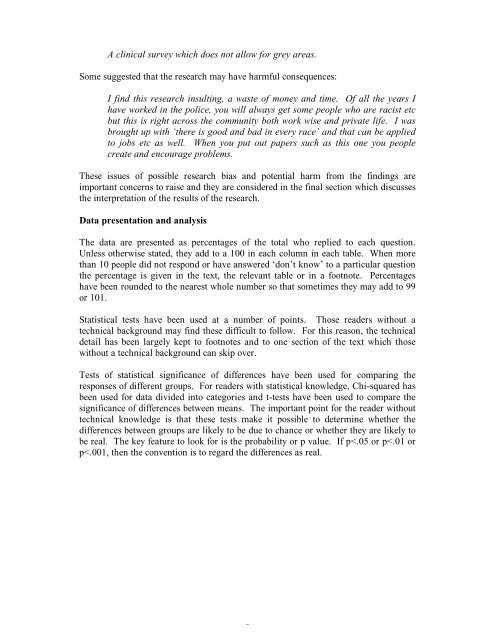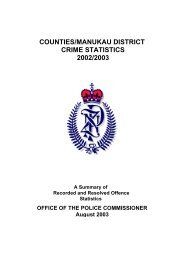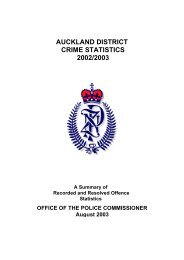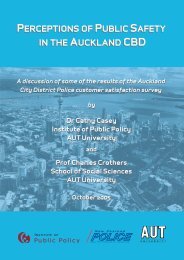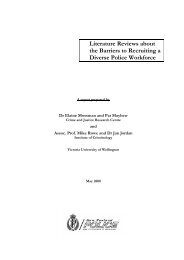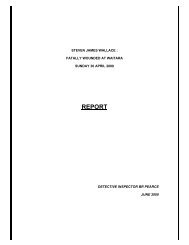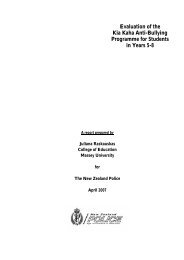Police Perceptions of Maori - Rethinking Crime and Punishment
Police Perceptions of Maori - Rethinking Crime and Punishment
Police Perceptions of Maori - Rethinking Crime and Punishment
Create successful ePaper yourself
Turn your PDF publications into a flip-book with our unique Google optimized e-Paper software.
A clinical survey which does not allow for grey areas.<br />
Some suggested that the research may have harmful consequences:<br />
I find this research insulting, a waste <strong>of</strong> money <strong>and</strong> time. Of all the years I<br />
have worked in the police, you will always get some people who are racist etc<br />
but this is right across the community both work wise <strong>and</strong> private life. I was<br />
brought up with ‘there is good <strong>and</strong> bad in every race’ <strong>and</strong> that can be applied<br />
to jobs etc as well. When you put out papers such as this one you people<br />
create <strong>and</strong> encourage problems.<br />
These issues <strong>of</strong> possible research bias <strong>and</strong> potential harm from the findings are<br />
important concerns to raise <strong>and</strong> they are considered in the final section which discusses<br />
the interpretation <strong>of</strong> the results <strong>of</strong> the research.<br />
Data presentation <strong>and</strong> analysis<br />
The data are presented as percentages <strong>of</strong> the total who replied to each question.<br />
Unless otherwise stated, they add to a 100 in each column in each table. When more<br />
than 10 people did not respond or have answered ‘don’t know’ to a particular question<br />
the percentage is given in the text, the relevant table or in a footnote. Percentages<br />
have been rounded to the nearest whole number so that sometimes they may add to 99<br />
or 101.<br />
Statistical tests have been used at a number <strong>of</strong> points. Those readers without a<br />
technical background may find these difficult to follow. For this reason, the technical<br />
detail has been largely kept to footnotes <strong>and</strong> to one section <strong>of</strong> the text which those<br />
without a technical background can skip over.<br />
Tests <strong>of</strong> statistical significance <strong>of</strong> differences have been used for comparing the<br />
responses <strong>of</strong> different groups. For readers with statistical knowledge, Chi-squared has<br />
been used for data divided into categories <strong>and</strong> t-tests have been used to compare the<br />
significance <strong>of</strong> differences between means. The important point for the reader without<br />
technical knowledge is that these tests make it possible to determine whether the<br />
differences between groups are likely to be due to chance or whether they are likely to<br />
be real. The key feature to look for is the probability or p value. If p


